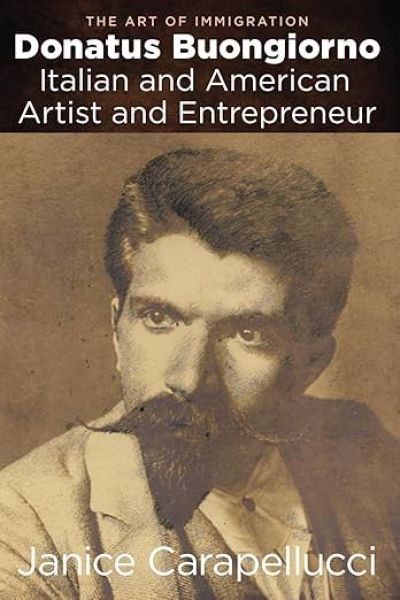“The Art of Immigration: Italian Art in an American Church” tells the story of the Church of the Most Precious Blood, the church at the heart of Manhattan’s downtown Little Italy. The story is told from multiple angles. First, and most gloriously, this is one of the few churches with an interior almost completely preserved from the days before Vatican II, with turn-of-the-century Sicilian marble altar furnishings, statues dating back to the earliest Italian immigrant communities, and a complete suite of murals by Italian immigrant artist Donatus Buongiorno. All of these artistic elements are carefully described and beautifully photographed in full color.
The photographs open the door to a more hidden past. The donors of these images, the importers and creators of the art are all gone now, but they can be brought back to life through detailed examination of what they left behind. “The Art of Immigration: Italian Art in an American Church” includes essays by experts in such historical recreation, such as journalist Paul Moses and Janice Carapellucci, a relative of mural painter and ecclesiastical interior decorator Donatus Buongiorno and, like him, a designer. Comprehensive detective work reveals an intricate, interwoven community of multiple generations at Most Precious Blood. New immigrants established neighborhood businesses in the shadow of the church and preserved their families’ stories in Most Precious Blood’s decorations, which were themselves made by or purchased from other immigrants in the community.
“The Art of Immigration: Italian Art in an American Church” is not a closed book. Its inventory of statues documents the process by which early 20th century Little Italy became the struggling working-class neighborhood that attracted Catholic Worker foundress Dorothy Day, who prayed before Most Precious Blood’s Saint Joseph statue, and later became a multi-Asian Chinatown where Vietnamese Catholics brought their statue of Our Lady of La Vang to the church. Its statues are still the center of significant celebrations. Most Precious Blood has long been associated with the annual San Gennaro Festival. It has also become the home of the annual feast of Saint Rocco, downtown Little Italy’s oldest feast day, and the feast of Saint Vincent Martyr, patron of immigrants who started an industry of profitable rag collecting in New York.
“The Art of Immigration: Italian Art in an American Church” contains something for everyone: images, text, history, biography, scholarly investigation of the interconnections of art and community life, and an appreciation of the people who made Little Italy a vibrant neighborhood for generations that continue today in the story of a contemporary community.
Carapellucci’s and Brown’s second book “The Art of Immigration: Paintings by Donatus Buongiorno” is a catalogue of paintings by an 1892 Italian immigrant to the U.S., Donatus Buongiorno. The paintings were part of the 2019 exhibit at Most Precious Blood Church rectory in New York. Color reproductions of all exhibited paintings and many others including murals are housed in the church.
Carapellucci’s final installment in tribute to her artist ancestor is a compendium of everything else she knows about Donatus Buongiorno that wasn’t in the previous two books. “The Art of Immigration, Donatus Buongiorno: Italian and American, Artist and Entrepreneur” includes details about his frequent trips between Italy and the U.S., painting careers in New York City and Naples, Italy, details about his wife, child and home life, and details about his residences in Manhattan, The Bronx, and Boonton, NJ. It culminates with Donatus losing his 1897 naturalized U.S. citizenship in the 1920s for remaining too long (more than 2 years) in Naples, his country of birth, during a trip.
https://www.lagazzettaitaliana.com/history-culture/10566-author-janice-carapellucci-pays-tribute-to-her-artist-ancestor#sigProIddf91e90c8c
All three of Carapellucci’s books can be purchased at Amazon.




